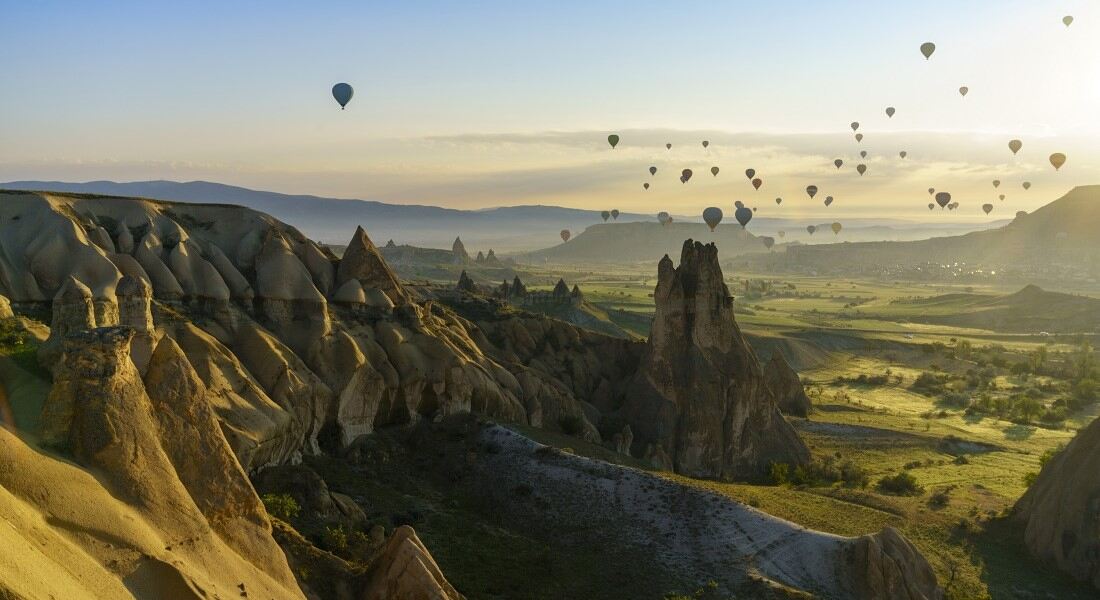
Cappadocia, which is in central Turkey and has a lot of history, has become a trendy tourist spot in recent years. The area is famous for its unique geological formations, including fairy chimneys, rock formations, and valleys. Cappadocia’s popularity is due to its stunning natural beauty, fascinating history, and cultural significance.
The area is full of history, with evidence of people living there as far back as the Hittite period. In addition, Cappadocia has always been a mix of different cultures and religions. Early Christians, for example, fled to the area to escape persecution. As a result, the region is home to a wealth of ancient churches, underground cities, and other historical sites.
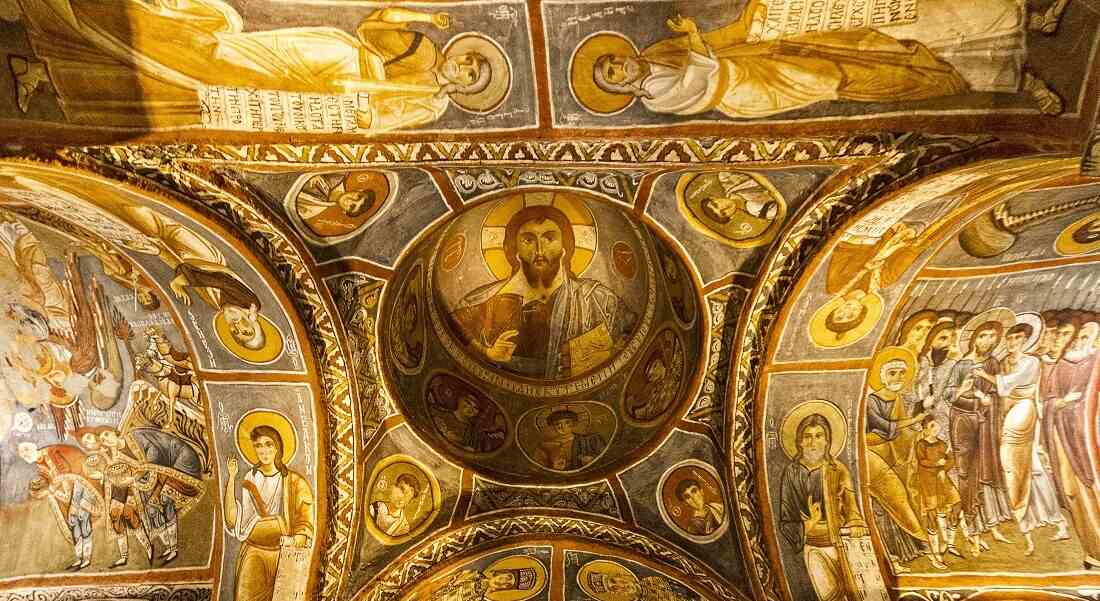
Cappadocia, located in central Turkey, is a UNESCO World Heritage Site due to its extraordinary geological formations, ancient underground settlements, and historical significance. The area has been inhabited for thousands of years, and its history can be traced back to several different civilizations and periods.
The Paleolithic Era: The earliest evidence of human habitation in Cappadocia dates back to the Paleolithic era, around 500,000 years ago. Stone tools and other artifacts from this time have been found in various parts of the region, indicating that early humans lived in small groups and subsisted on hunting and gathering.
The Hittites and the Assyrians: The Hittites were an ancient culture that lived in Cappadocia from about 1600 BCE to 1200 BCE. They were one of the first known people to live there. After that came the Assyrians, who took over the area in the 8th century BCE and built important cities like Kayseri and Malatya.
The Persians: In the sixth century BCE, the Persian Empire took over Cappadocia and ruled it for about 200 years. During this time, the region became an important center for trade and commerce, and many important cities and towns were established.
The Hellenistic Period: Alexander the Great took over much of the Persian Empire, including Cappadocia, in the 4th century BCE. After Alexander’s death, his generals fought for control of the region, which eventually came under the power of the Seleucid Empire. As a result, the Cappadocian Kingdom was established in the 3rd century BCE, which lasted until the Roman conquest in the 1st century BCE.
Roman Rule: During the Roman period, Cappadocia became an important center for Christianity, and many underground cities, rock-cut churches, and monasteries were built in the region. Cappadocia also played a role in the early development of the Christian church, and many important theologians and religious figures lived and worked in the area during this time.
The Byzantine Empire: When the Roman Empire fell, the Byzantine Empire took over and made Cappadocia a part of its land. During this time, the region continued to flourish as a center for Christianity, and many of the rock-cut churches and other religious structures still standing today were built during this period.
The Ottoman Empire: In the 15th century, the Ottoman Empire took control of Cappadocia, which stayed under Ottoman rule until the early 20th century. During this time, Cappadocia became a center for Islamic culture and art, and many essential mosques, tombs, and other religious structures were built in the region.
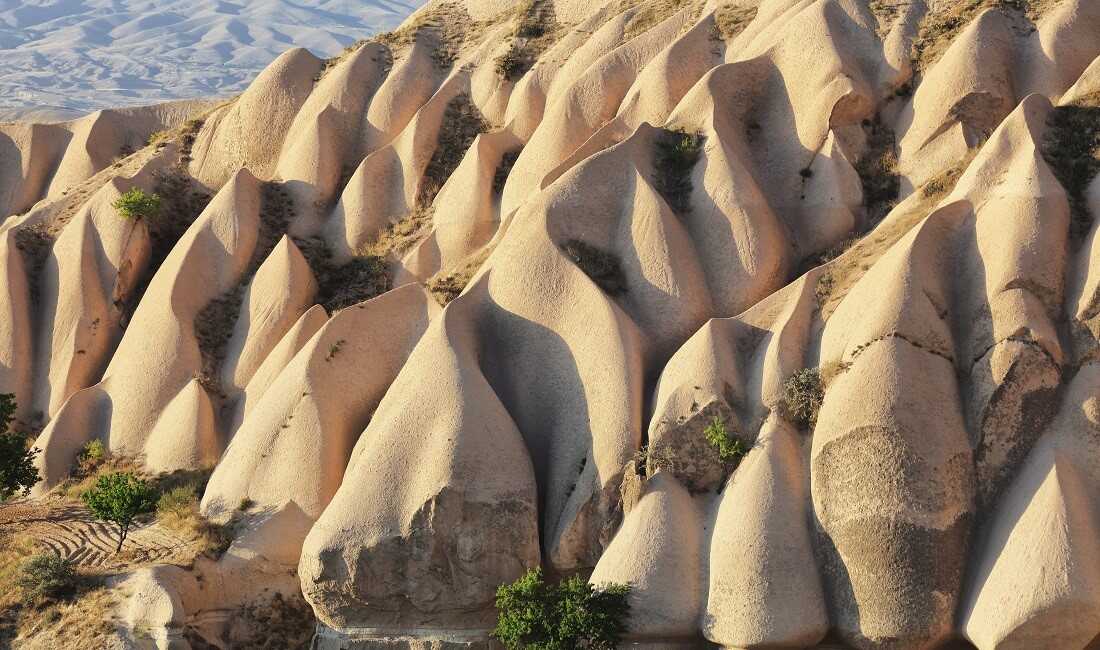
The region’s landscape is characterized by carved valleys, underground cities, and cone-shaped rock formations known as “fairy chimneys.” Cappadocia’s geological formations were formed millions of years ago due to volcanic activity in the region. The area was covered in ash and lava during this time, which eventually hardened and formed a soft, tuff rock layer. Wind and water erosion wore away at this layer of rock, creating unique formations.
As the rock eroded, people began carving into it to create homes, churches, and even entire underground cities. This practice dated back to the Hittite era (around 1800 BCE) and continued through the Roman and Byzantine periods. The fact that so many of these historic buildings are still standing gives tourists an insight into the region’s illustrious past and diverse cultural traditions.
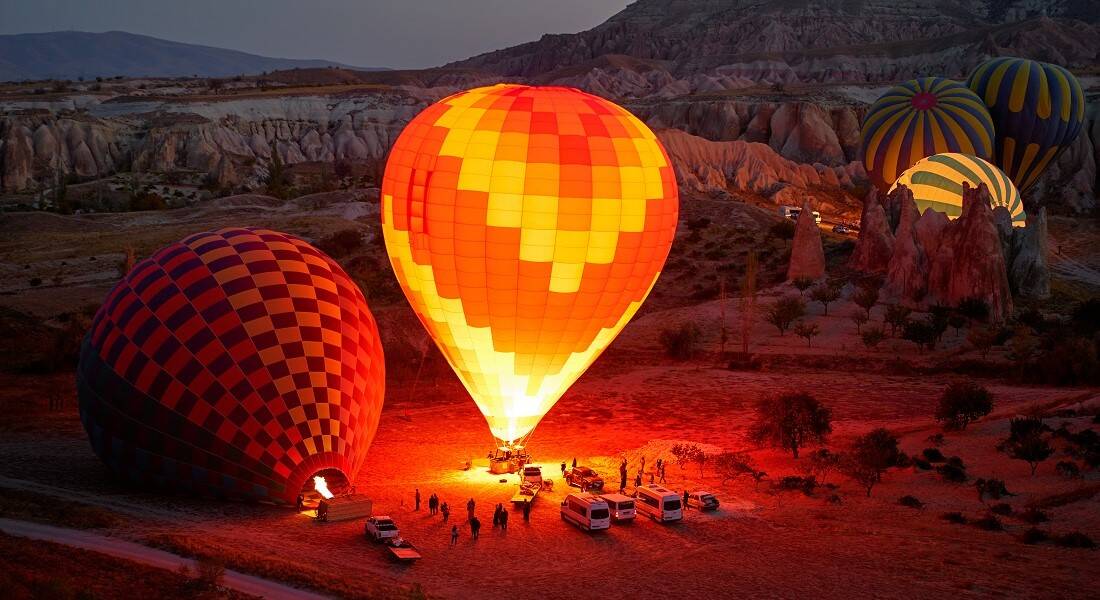
There is an excellent variety of things to do and see in Cappadocia. These are a few of the most popular attractions in the area:
Hot air balloon rides: One of the most popular activities in Cappadocia is taking a hot air balloon ride over the fairy chimneys and valleys. This is a once-in-a-lifetime experience that offers breathtaking views of the stunning landscapes of Cappadocia.
Visiting the fairy chimneys: These are unique geological formations found throughout Cappadocia. These tall, cone-shaped rock formations are a must-see for the region.
Visiting historical and cultural sites: Cappadocia is home to many historical and cultural sites worth visiting. The Goreme Open-Air Museum, a UNESCO World Heritage Site with old churches and monasteries, is one of the most popular sites. The Uchisar Castle offers panoramic views of the surrounding landscapes. In addition, there are numerous attractions to see in the area, including the Zelve Open-Air Museum, Pasabag, Cavusin, Open Palace, Selime Monastery, Monastery Valley, Soganl Valley, Avanos, and Ihlara Valley.
Exploring the underground cities: Cappadocia is home to several underground cities carved out of the soft volcanic rock by early Christians. Exploring these cities is a fascinating way to learn about the area’s rich history.
Hiking and outdoor activities: Cappadocia’s stunning landscapes and rugged terrain make it an excellent destination for hiking and other outdoor activities. Visitors can explore the deep valleys and canyons.
Horseback riding: This is a viral activity in Cappadocia, thanks to the region’s beautiful landscapes and unique terrain. There are a lot of horseback riding trips and trails for riders of all skill levels, from beginners to experts. These tours offer a unique way to explore the region’s valleys, rock formations, and historical sites.
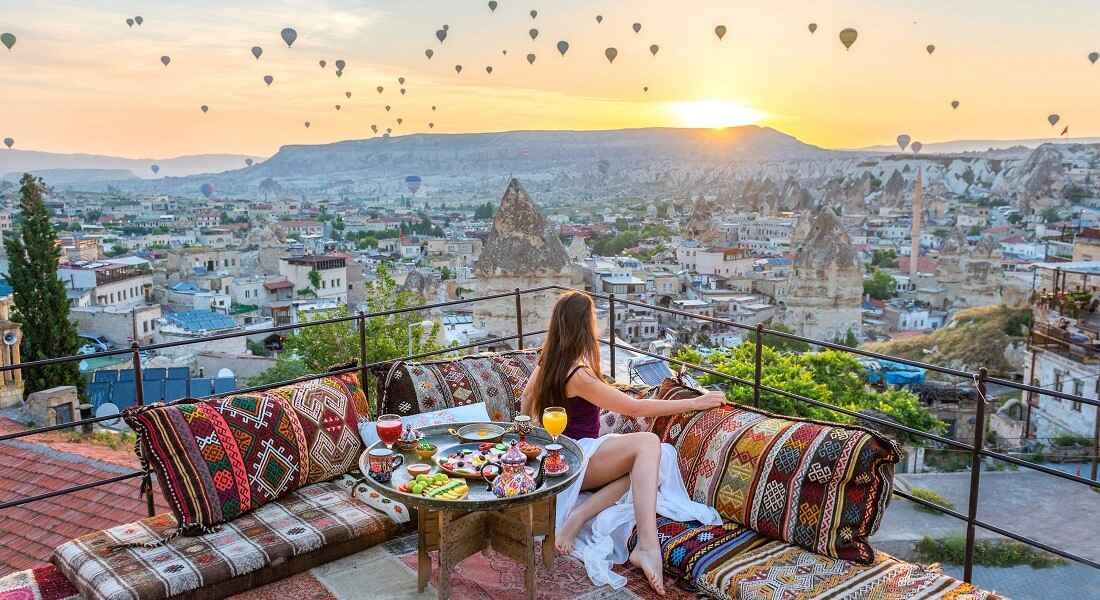
Cappadocia’s cuisine is distinct and influenced by the region’s geography, climate, and cultural history. Cappadocian cuisine uses local ingredients such as lamb, beef, trout, dried fruits, and vegetables grown in the region’s fertile soil. Many traditional Cappadocian dishes are simmered in clay pots or wood-burning ovens, which gives the flavors time to develop. As a result, Cappadocian cuisine combines sweet and savory flavors, such as in dishes like stuffed apricots or lamb with prunes. Here are some of the local Cappadocian dishes:
Pottery Kebab: Slow-cooked kebab accompanied by vegetables in Avanos pots. It is tender, like all meats cooked on a slow fire. Since the vegetables next to it are cooked in juice, their flavors mix, and you can’t help yourself from making a pontoon for the water. The presentation of the pottery kebab is also beautiful. The waiter breaks the pot brought to the table, serving the contents.
Stuffed Leaves: Famous for its vineyards, Cappadocia is also famous for its grape leaves. As a result, you can easily find stuffed leaves on the menus of most restaurants.
Urgup Meatballs: Nevşehir region is famous for its potatoes. Urgup meatballs, unique to this region, are made by adding potatoes to the mortar.
Nevsehir Manti: Turkey has many “manti” types, depending on the region. The most critical points distinguishing Nevsehir Manti from others are that it is baked in the oven, made with bread dough, and cooked by slicing, not in small bites like classic “manti,” but in rolls with minced meat and onions.
Apricot Stew: One of the Anatolian dishes combining fruit and meat. In this recipe, which belongs to Nevşehir cuisine, the main ingredients are dried apricots and lamb, but if there are no dried apricots, yellow prunes can be preferred. Some molasses is added during cooking if the apricots or plums are not too sweet.
Stuffed Quince: Stuffed Quince combines fruit and meat and is popular in Ottoman cuisine. According to the Nevşehir style, quinces are stuffed with spicy ground beef and cooked without rice.
Dried Cream: It’s like a wafer made of milk! It’s not soft but firm enough to be cut with a knife and broken by hand. Boiling milk, resting, and drying the cream requires five days. However, it can last 10–15 days in the refrigerator.
Dolaz: It is a version of flour halva with eggs and walnuts, unique to the Cappadocia region. Only grape molasses or honey is used instead of sugar for flavoring.
Köftür: In Nevşehir, “vintage” does not only mean collecting wine grapes from Avanos vineyards. At the same time, October means making molasses, fruit pulp, and meatballs, among the most popular tastes. Köftür is called Anatolian jelly. It’s a kind of grape delight. It has only three components: grape juice (must), flour, and starch. Moreover, it has no added sugar.

Pottery has been an essential part of the culture and economy of Cappadocia for centuries. The region’s unique geology, with its soft volcanic tuff rock, has made it an ideal location for pottery-making. The history of pottery in Cappadocia dates back to the Hittite period, around 2000 BCE, and the craft has been passed down through generations ever since.
During the Seljuk and Ottoman periods, pottery production in Cappadocia peaked. The Ottomans used pottery from the area to cook, store, and move goods. The pottery was also exported to other regions and countries, including Europe and the Middle East.
In Cappadocia, making pottery is still a thriving business, and many artists still use techniques passed down from generation to generation. The pottery is made using local clay, which is processed, molded, and decorated by hand. Cappadocia’s natural landscape and rich cultural history often inspire the designs and patterns used in the pottery.
Cappadocian pottery is functional, but it is also seen as a form of art, and there are many collectors and fans worldwide. As a result, potters often add intricate designs and patterns to their work, and many try out new techniques and materials to make one-of-a-kind pieces.
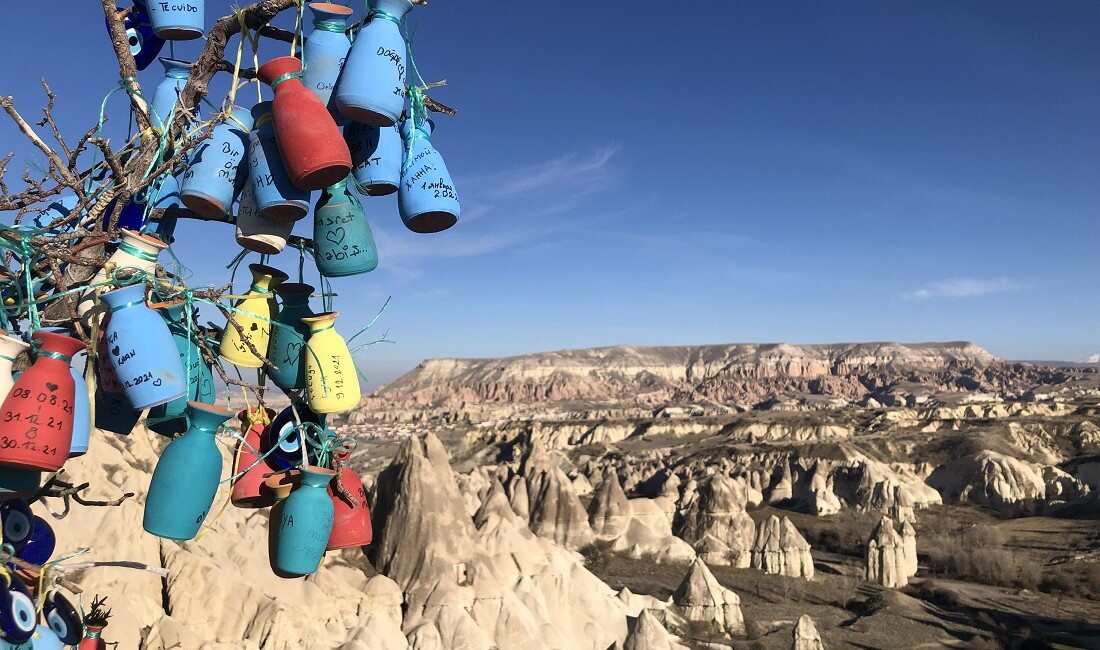
When you go to Cappadocia, you can stay in a number of places that fit different tastes and budgets. Following are some of Cappadocia’s most popular lodging options:
Cave Hotels: One of Cappadocia’s unique accommodation options is a cave hotel carved into the region’s soft volcanic rock. These hotels offer a one-of-a-kind experience. Many have beautiful landscape views and are decorated in a traditional Turkish style.
Boutique Hotels: Cappadocia also has many boutique hotels offering visitors a more intimate and personalized experience. These hotels are often located in traditional Ottoman-style buildings and offer unique, stylish rooms and suites.
Honeymoon hotels: Cappadocia is famous for newlyweds because of its unique landscapes and beautiful scenery. There are a lot of hotels in the area that cater to honeymooners by giving them luxurious rooms, romantic settings, hot tubs, and spas. Cappadocia has plenty of options to make your honeymoon unforgettable.
Guesthouses: For those looking for a more budget-friendly option, guesthouses are a great choice. These smaller, family-run hotels have simple but comfortable rooms and offer traditional Turkish hospitality.

In conclusion, Cappadocia is truly a one-of-a-kind destination that offers something for everyone. There is a wealth of interesting sights and activities to partake in across this region of Turkey, from its unusual geological formations and beautiful landscapes to its extensive historical and cultural heritage. So if you’re considering a trip to Turkey, add Cappadocia to your itinerary. With its breathtaking scenery, friendly locals, and endless opportunities for adventure and exploration, it’s sure to be a trip you’ll never forget.
